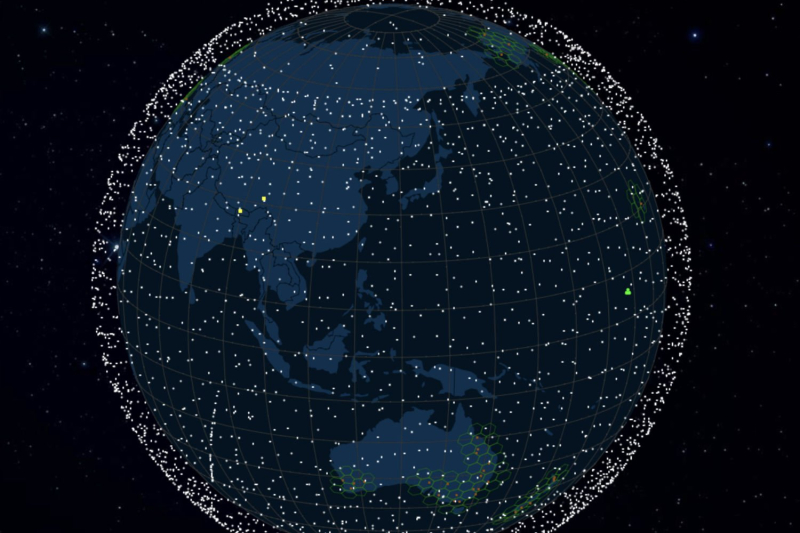
© Usbek & Rican
Starlink is a subsidiary of Elon Musk's SpaceX group. Over the past four years, the company has sent thousands of satellites into orbit to provide fast, seamless internet connection to the entire world. If the offer makes it possible to connect people who come from former 'white areas'; it is widely criticized by astronomers for the light pollution it causes in the sky.
In this video, published by the VisionaryVoid Twitter account, we can see the evolution of the number of Starlink satellites in orbit around the Earth. If they were still quite few in number before the pandemic, the constellation has grown greatly in recent years, reaching today more than 4,700 devices at the end of 2017. year 2023.
The evolution of starlink in last 4 years .. pic.twitter.com/agLfnovfzx
— VisionaryVoid (@VisionaryVoid) April 5, 2024
The evolution of the Starlink constellation makes it possible to become aware of another phenomenon, just as frightening, the pollution of the Earth's orbit. Today there are more than 900 000 objects sent by Man that orbit the Earth.
If the animation does not allow you to realize the size occupied by these satellites at scale (the satellites are in reality much smaller and they are invisible on such a wide view of the Earth), it allows us to understand the issues behind this space race and the possible excesses of the latter.
Kessler syndrome
Scientists' biggest fear on this subject is Kessler syndrome. Theorized by the scientist of the same name, this idea is that the proliferation of satellites and objects in orbit will one day lead to collisions. These “crashes” will then create a cloud of debris, uncontrollable and dangerous.
As they spread into orbit, they will come into contact with other satellites, creating new debris. Kessler explains in his analysis that the collisions will be such that an immense cloud of debris will enclose Humanity on itself. Getting to space will have become impossible, because of this debris blocking the road.
Rules are put in place
If the orbit is still far away from reaching the saturation point predicted by Kessler in the 1970s, international space agencies like NASA or ESA in Europe take this subject very seriously. and numerous measures are taken to limit the proliferation of debris in orbit.
For several years it has been notably forbidden to send a satellite into orbit if the latter is not programmed to achieve a controlled return to the atmosphere. The objective is to rid the Earth's neighborhood of these satellites once their mission is completed. At the same time, this return to Earth must be controlled so that the satellite does not crash into inhabited areas.
📍 To not miss any news from Presse-citron, follow us on Google News and WhatsApp.

